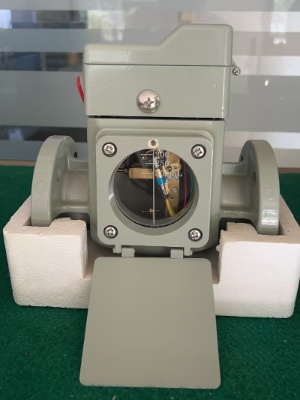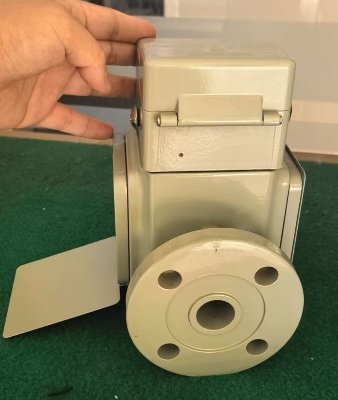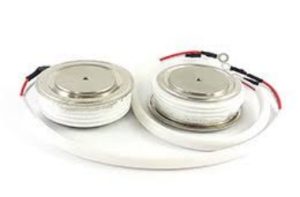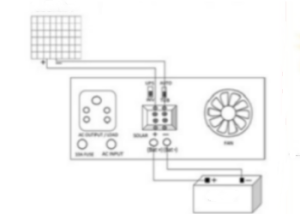Electronic Components Supplier | Transformers, Inductors, Inverters
Explore the key role of gas relays in power transformer protection. This in-depth guide explains its working principle, core functions, and why it is essential for preventing catastrophic failures in the era of smart grids and renewable energy. Understand the operating mechanism, advantages, and maintenance points of gas relays.
In the complex and buzzing core of our power infrastructure – the substation, stands a silent sentinel. Transformers are undoubtedly the giants here, responsible for converting voltage to efficiently transmit electricity over long distances, while their protection is often entrusted to a seemingly simple mechanical device: gas relays. This anonymous hero is the key first line of defense for power transformers, serving as the ‘canary in the mine’ to prevent minor internal faults from escalating into catastrophic, multi million dollar losses and widespread power outages.
As our power grid continues to evolve with the integration of renewable energy and intelligent technology, the reliability of every component is crucial. Understanding gas relays is not only for engineers; For anyone investing in the stability and resilience of our modern energy supply, it is crucial. This article delves into the working principle, importance, and lasting practical significance of this important protective device.

Physical picture of QJ4-25 gas relay
1.What is a gas relay? Basic Principles
German engineer Max Buchholz invented the gas relay in 1921. It is a gas-driven safety device. People install it on the connecting pipeline between the main oil tank and the oil storage tank of oil-immersed transformers with a capacity exceeding 500 kVA.Its operating principle is elegant and simple, based on a fundamental principle: internal faults in transformers will generate gas.
1.1. Physical installation and location
To understand its function, it is first necessary to visualize a typical oil immersed transformer.The main oil tank holds the iron core and winding, and insulating oil immerses them. A small oil tank called a storage tank sits above the main tank. This storage tank lets the oil expand and contract as temperatures change. People install the gas relay on the metal pipeline that connects these two oil tanks, usually at a slight angle (between 2 and 5 degrees).This strategic layout is crucial because any gas generated inside the main fuel tank must form bubbles, flow towards the oil storage tank, and directly pass through the relay.
How does the gas relay work? Two level alarm system
Gas relays operate based on a two-level principle, capable of detecting both minor faults that develop slowly and sudden major events. Inside its chamber, there are two carefully calibrated floats and mercury switches.
2.1. Phase 1: Alarm circuit (minor malfunction)
This stage aims to capture early or developing faults.
2.1.1. Fault process
Slow developing faults, such as local overheating, poor electrical contact, or partial discharge (corona), can lead to the decomposition of insulating oil. This decomposition will release gases such as hydrogen, carbon monoxide, and methane. These gases are lighter than oil and will flow upwards towards the oil storage tank.
2.1.2. Response of Relay
When these gases accumulate at the top of the gas relay chamber, they will replace the oil inside. This causes the upper float to gradually tilt downwards. Once a predetermined amount of gas is collected (and the float tilts to a specific angle), a mercury switch connected to the alarm circuit will be triggered. This immediately sends a signal to the control room, warning operators of potential issues. The key here is early warning – the transformer can still operate, but technicians have realized the need for an investigation, such as conducting gas analysis, to prevent minor issues from escalating into disasters.
2.2. Phase 2: Trip circuit (major fault)
This stage is specifically designed for severe internal faults that require immediate isolation of transformers.
2.2.1. Fault process
Catastrophic events, such as severe internal short circuits, winding failures, or insulation breakdowns, can generate a large amount of rapid gas. This event is usually accompanied by a strong oil flow, similar to a pressure wave, rushing from the main oil tank to the storage tank.
2.2.2. Response of Relay
This sudden oil flow will impact the baffle (or blade) located in the lower channel of the relay. The movement of the baffle causes the lower float to tilt. This action will immediately trigger the second mercury switch, which is directly connected to the tripping circuit of the transformer circuit breaker. The circuit breaker trips within a few milliseconds, completely disconnecting the transformer from the power supply. This rapid action is crucial for preventing explosions, fires, and widespread damage to transformers and surrounding equipment.
Key functions and core advantages of gas relays
Gas relay is not just a switch; It is a comprehensive diagnostic and protective tool.
3.1. Core protection function
Detecting latent faults: Its main advantage is the ability to detect slowly forming faults that other electrical relays (differential relays, overcurrent relays) may not be able to detect until it is too late.
Preventing catastrophic failures: By tripping the transformer in the event of a major failure, it can prevent environmental pollution caused by electrical fires, oil tank explosions, and insulation oil leaks.
Minimizing downtime and costs: Early detection allows for planned maintenance, avoiding unplanned long-term power outages and the high cost of replacing the entire transformer.
3.2. diagnostic capability
After the alarm is triggered, technicians can take a critical diagnostic step: gas sampling. A valve on the relay allows them to extract accumulated gas. By analyzing the composition and color of these gases (such as hydrogen and acetylene), experts can accurately determine the nature and severity of internal faults, thereby providing precise guidance for the repair process.
Gas relays in the modern energy landscape
In the era of digital substations and the Internet of Things, people may wonder about the status of a purely mechanical device. The reality is that gas relays have never had such practical significance as they do now.
4.1. Integration with smart grid
Sensors can equip modern gas relays. These sensors convert the movement of mechanical floats into digital signals. These signals can integrate into SCADA (Supervisory Control and Data Acquisition) systems. The SCADA systems then provide real-time status updates, send remote alarm notifications, and record data. This data supports predictive maintenance analysis.This bridges the gap between powerful mechanical protection and intelligent, data-driven power grid management.
4.2. The Importance of Renewable Energy
Large wind turbines and solar power plants use large step-up transformers. These transformers are subjected to unique pressures. Gas relays provide necessary and reliable protection for these critical assets, ensuring the stability of electricity fed into the grid from renewable energy sources and protecting significant investments in green energy infrastructure.
Limitations and necessary maintenance
No device is perfect, and understanding the limitations of gas relays is also part of leveraging their advantages.

Side view of QJ4-25 gas relay
5.1. Known limitations
It is only applicable to oil immersed transformers.
If the tap changer of the transformer has a separate oil storage tank and relay, it cannot detect faults in the tap changer.
For very minor malfunctions that do not produce enough gas, it is ineffective.
Slow oil leakage may lead to false alarms, as gas accumulates when the oil storage tank is emptied.
5.2. Ensuring Reliability: Maintaining Best Practices
Regular maintenance is necessary. This includes:
Regular testing: Conduct electrical testing to ensure that the alarm and trip circuits function properly.
Gas collection inspection: Regularly inspect and analyze any accumulated gas.
Check for oil leakage: Ensure that the relay and its pipelines are tightly sealed, safe, and reliable.
Conclusion
Gas relays are still a masterpiece of simple, efficient, and reliable engineering. For over a century, it has served as a vigilant guardian of one of the most expensive and critical assets in the power system. It serves as both a protective device and a diagnostic tool, making it indispensable. As we work to make the power grid smarter, more environmentally friendly, and more resilient, gas relays still provide the fundamental protection that serves as the cornerstone of power system safety and reliability. This proves that sometimes the most effective solution is also the most elegant.
Luoyang Datang Energy Technology Co., Ltd. is a high-tech enterprise integrating R&D, manufacturing and supply of power equipment such as transformers, new energy components, distribution cabinets and inverters. With technological innovation as the core, we focus on creating high-reliability and high-performance power solutions to serve global customers. With a strict quality control system and international standard certification, we continue to output excellent products and enable customers to build safe and stable power systems.







